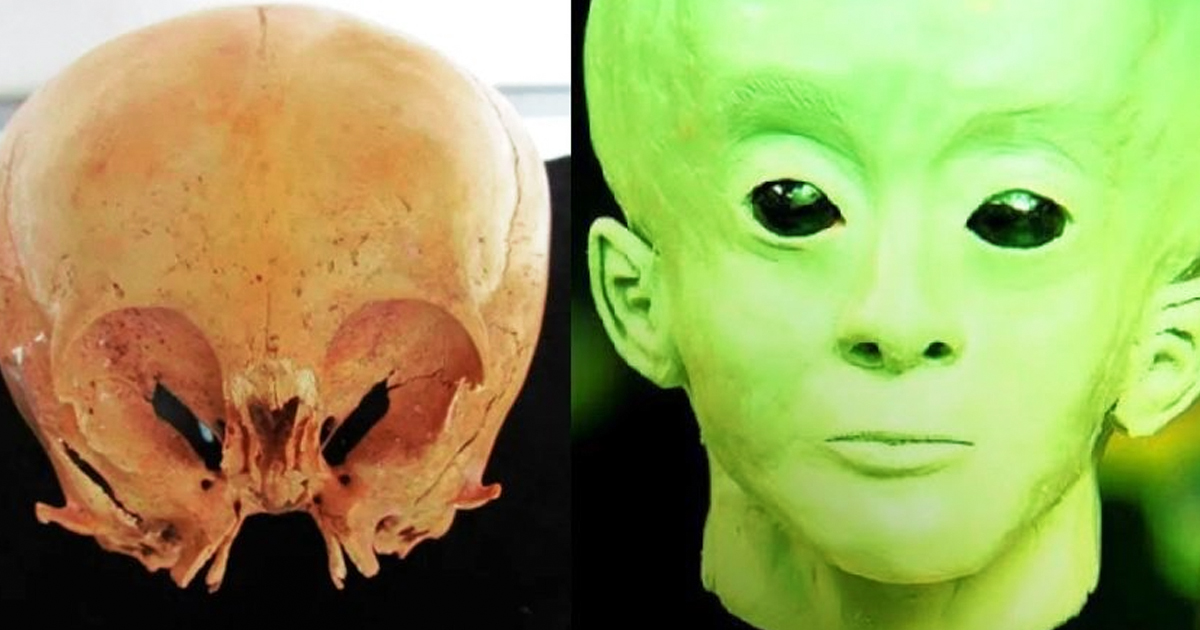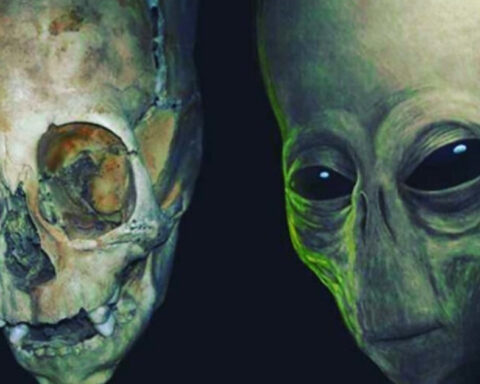In 1930s, a remote rural community 100 miles southwest of Chihuahua, Mexico, two unidentified bones were found: a complete human skeleton and a smaller malformed skeleton.
In late February of 1999, the owners showed Pye the Starchild skull. Then it was a particularly anomalous skull. At first, it was considered to be an unusual hereditary disorder.
The head was more symmetrical than the normal human skull. Surprisingly, every bone was formed like a human bone. In what way? Solving this strange skull’s puzzles became his task.
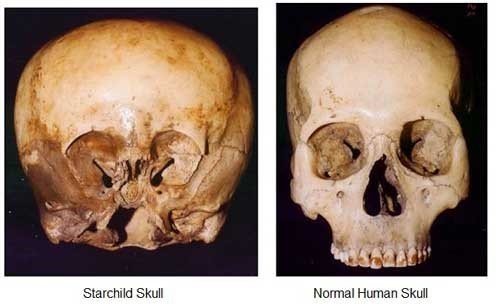
Skull Exploration
In the 1960s, an American girl of Mexican descent in her late teens was brought by her parents to meet relatives residing in a remote agricultural town in southwest Mexico. She was prohibited to visit any of the caves and passages, just like other adolescents, she went exploring.
The skeleton was lying on the ground’s surface in the rear of a mine shaft. Underneath that was a malformed skeletal hand intertwined in the human skeleton’s upper arm. The child stripped the soil from a shallow grave to expose a smaller skeleton, and still malformed. She did not have any clear information concerning her malformations.
The girl rescued both skulls and held them throughout her life. They were passed to an American man and five years later were passed to an American couple who now holds them.

The Mystery Skull
Skull suturing and the appearance of teeth at death mean the individual died about age 5. The mask is absent from the upper bridge of the nose to the foramen magnum, but the cranium and much of both eye orbits remain preserved.
This skull remains in doubt because many features of its anatomy escape categorization as inherited disorder, congenital deformation, or inflicted deformity (cranial binding).
The Skull.
It is believed to be Amerindian since the rear of the cranium experiences flattening as a result of being borne in infancy on a cradle frame. Age at death was around 25 years, plus or minus five. It is female since it is smallish and has other reduced points of reference.
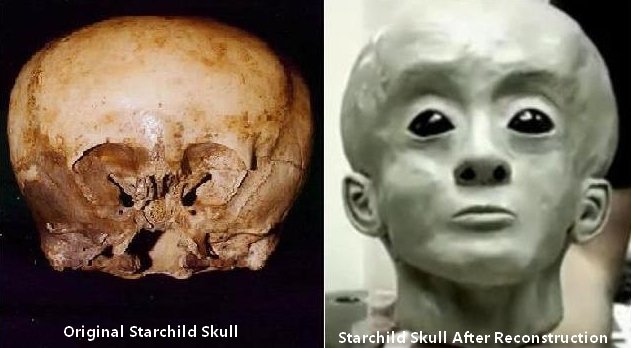
Binding
The child’s occipital deformation may have arisen from ancient societies’ usage of cranial binding. However, the ligaments seldom stretch below the cervical vertebrae since the human neck starts at the back of the head. Even when the head is surgically extracted, the upper bones are permanently divided, rendering it impossible to create a stable shape.
The child’s brain is well-sutured. No soft patch or distortion. The intial angle is marginally greater than the original radiocarpal space. This suggests that a heavy force other than binding may have induced the occipital’s severe deformation.
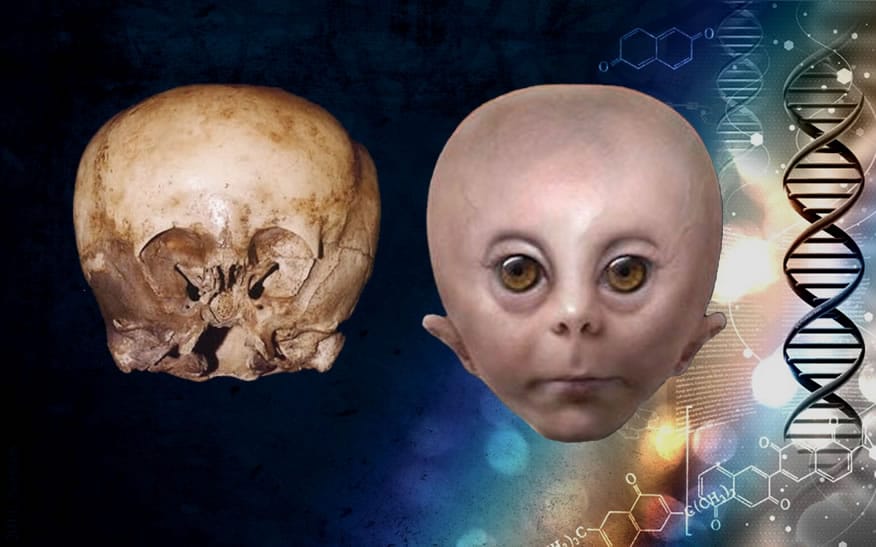
Brain Volume
Skull form is very close between the skeletons. They show a stark disparity in brain volume. Human brains are around 1400 cubic centimeters in length (cc). The human skull is thin, and normal for a human. The child’s skull is 200 cc bigger than the normal adult skull. If it had developed up to become an adult, the brain size would have grown up to 1800 cc.
When a 200 cc improvement in brain ability has arisen in a human form organism, the name of a new genus should be given. Homo Erectus averages more than Homo Habilis; Homo Archaic averages more than Erectus; Neanderthal averages more than Archaic. Thus, this infant reflects an obscure human-like creature.
Weight
A human skull weights 2.2 pounds (lbs.). The adult’s skull weights 1 kg., 13.4 ounces. With the infant skull’s fragment of removed maxilla, it measures 13.5 ounces. The head weights just around 7% of the adult skull, so it needs to be considerably lighter.
Symmetry
The child’s head is a symmetrical one (similarity on both sides). In certain cranial pathologies, there are variations in degree on each side of the brain. A skull of this form is extremely unlikely to hold such a distinctly mirror symmetry.
Sutures
CAT scans reveal that none of the sutures between the bones in the child’s skull have healed. Both cases of congenital defects exhibit a degree of premature suture closing. This raises the probability that the child’s head was the product of a congenital disorder. It has progressively evolved to take its present form.
Face.
Humans have recessed eye sockets with optic nerves and optic fissures found in the inner quadrant of the cone. The child’s eye sockets have a narrow scalloped form with optic nerves and optic fissures relocated to the inner bottom. Both sockets are designed with extremely fine details that cannot be clarified in any other manner than architecture.
The orbital form and the eyeball diameter are also distinct. The adult is a vaguely rectangular shape, while the infant is an upside down rectangle. Adults are usually blunt near the end of the rectangle. Children’s figures have easily definable sides.
Ears.
There are ear canals on all sides of the child’s skull. Ears look average in form and scale, but a CAT scan showed that they are wider and broader than normal human inner ears. There is no way to tell whether an actual ear was present.
The Foramen Magnum
The foramen magnum is the hole where the spinal column attaches to the brain. The foramen is placed just behind the middle of the occipital face to balance it with the hollow-filled face.
The comprehensive skull reconstruction has allowed the child’s foramen magnum to be moved to a central point that allows greater alignment between its rear brain and ears.
Necks.
Human neck attachments begin at the the hairline and sweep out in a semicircle that reaches to just below the ears and converges at the foramen magnum. The typical foramen diameter ranges from 5 to 6 centimeters.
The foramen has been somewhat concave, although the inion has grown around 3 cm through the child’s skull. This dramatic improvement indicates the neck protecting the child’s head would have been from 1/2 to 1/3 of standard. Thin-necked aliens and variants have long been deemed hallmarks of some alien forms.
Muscles.
The mandible is just as diminished as the part of the jaw where chewing muscles form. While chewing, the muscles are often used for binding and holding the lower face to the skull.
Depending on the limited mouth region the jaw muscles must have had, it would be rather challenging to shift them.
Human-Alien Hybrids
Abductees and contactees say aliens are performing genetic tests that create hybrids of themselves and humans.
The findings are consistently characterized as appearing human, having a somewhat larger face and a lower lip that is supported by a large head. There is a slightly shorter neck that easily fits a head of medium height. The ears appear much smaller and tiny or absent.
Grays eyes are represented as black teardrop forms that are consistently horizontal around the center of the forehead. If wide orbs are in reality eyes, it argues against the child’s eyes being connected to them.
Alien bodies typically have Grey eyes before the doctor lifts them up and reveals them to really be black, adjustable coverings like contact lenses or sunglasses.
The pupils were round and black with lots of white surrounding them. Those sockets will match seamlessly into the eyes of the kid.
Star Being Legends.
There are well-known folktales that have spread throughout Central and South America. These myths say that “Star Beings” come down from the sky and impregnate females in small, isolated settlements.
Conclusion
Pathology is the traditional explanation for any human-like skull that does not match the “normal” human mold.
Abnormalities found in the child’s skull could be a rare mixture of many serious medical conditions. Without some clear facts to the contrary, popular psychology would say the skull is a collection of pathological faults.
Any comments placed forward by this entity would still prevail over others. It is the truth.

